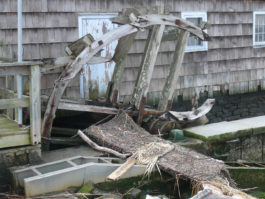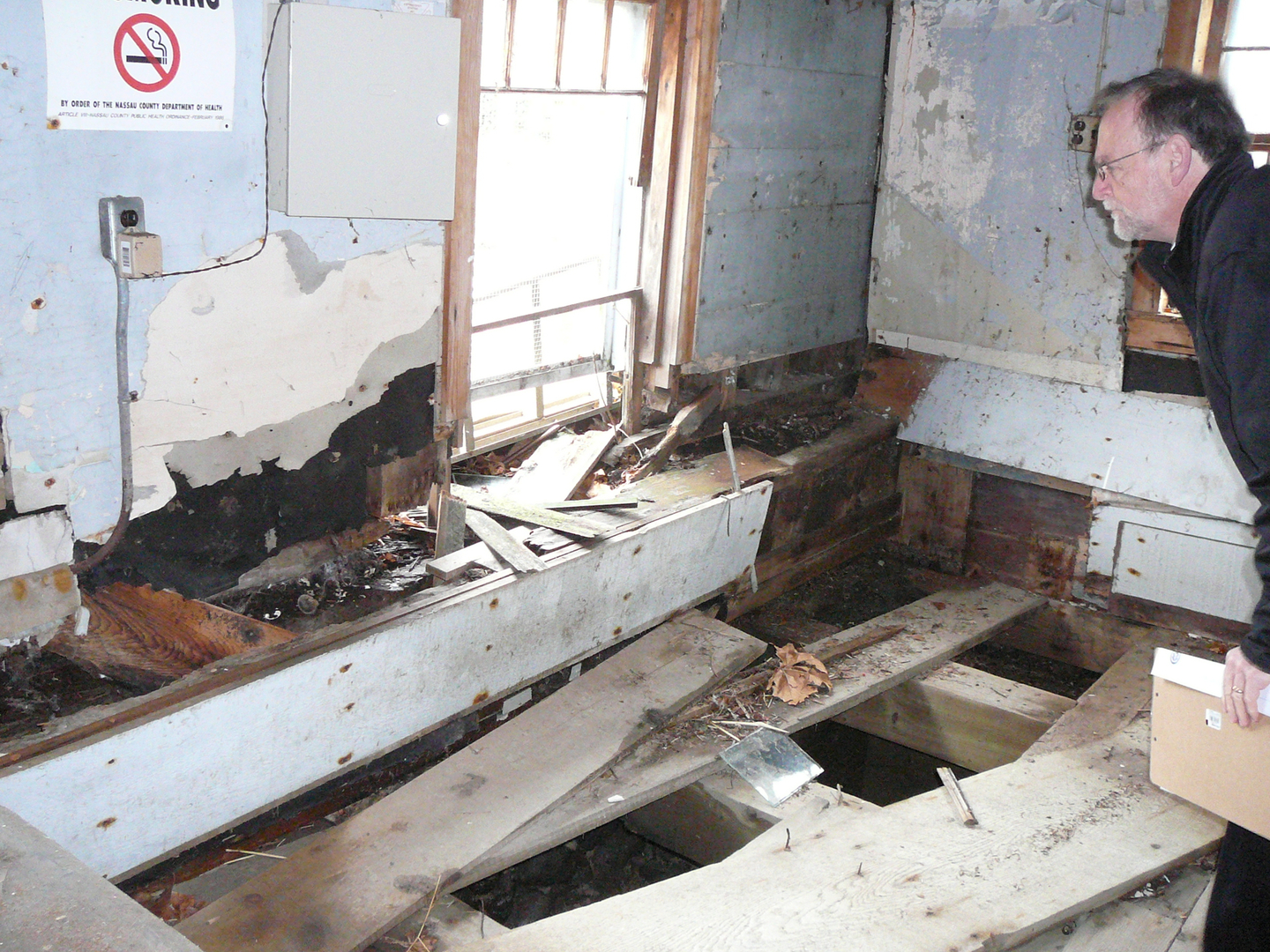The historic Saddle Rock Grist Mill in Great Neck might soon be the subject of some stabilization and repairs, mill advocates said, although there may be a long road ahead.
Alice Kasten, the president of the Great Neck Historical Society, and Ellen Birnbaum, the county legislator representing Great Neck, went through the damaged mill with a county architect assigned to draw up stabilization plans. The county has $100,000 in Superstorm Sandy-related money to repair part of the grist mill.
“This is the first step, but after the physical rehabilitation, I will not stop,” Birnbaum said, describing it as a “gem” in Great Neck. “I’m going to keep pushing for more work to be done.”
Birnbaum said E&A Restoration Inc., a Long Island-based historic restoration company, will do the repairs.
The county-owned grist mill, which is one of a handful of tide mills left in the nation, played an important role in the development of the peninsula during the 1700s and 1800s. It served as “the commercial port of Great Neck” and a place where farmers gathered, Kasten said, but fell into disrepair.

The mill’s interior features grinding mechanisms and newspapers from the 1870s plastered on the walls, but it has suffered damage from water, raccoons and general neglect.
The grist mill’s wheel also suffered major damage within the last year and several floorboards are missing.
“It was nice that they have the architect working on this, but he’s only working on the Sandy damage,” Kasten said. “You can see there’s a tremendous amount to do and it’s not all from Sandy.”
In addition to the grist mill, the Great Neck Historical Society is working with the Great Neck Park District and Town of North Hempstead to repair the Stepping Stones Lighthouse, another historic landmark from the 1800s visible from Kings Point.
The town has planned to invest around $1 million in its capital plan to restore the lighthouse. There is also about $365,000 worth of grants between the town and park district to aid the beleaguered landmark.
Kasten said she hopes the county will take repairing the mill as seriously as the town does with the lighthouse.
“The town had volunteered to take the lighthouse and then when Judi [Bosworth] became supervisor, she was really dedicated to it,” Kasten said. “I think [the grist mill] was kind of thrust upon the county and we’re talking a long time ago, when there was money around and then hard times came, so I don’t get the feeling that this is a priority.”
“I hope I’m wrong,” Kasten said.
Birnbaum said she is optimistic, based on conversations with County Executive Laura Curran, that the new administration “will be more attentive to the mill” and believes the mill could eventually be reopened to the public for educational tours and class trips.
“The location is just beautiful and I believe that people around the county could appreciate it as well,” Birnbaum said. “There are signs leading to the grist mill throughout Great Neck.”
The Great Neck Historical Society is also considering re-activating its grist mill subcommittee.
The society has been invited to make a presentation at a meeting of the Tide Mill Institute in Astoria on April 7.



